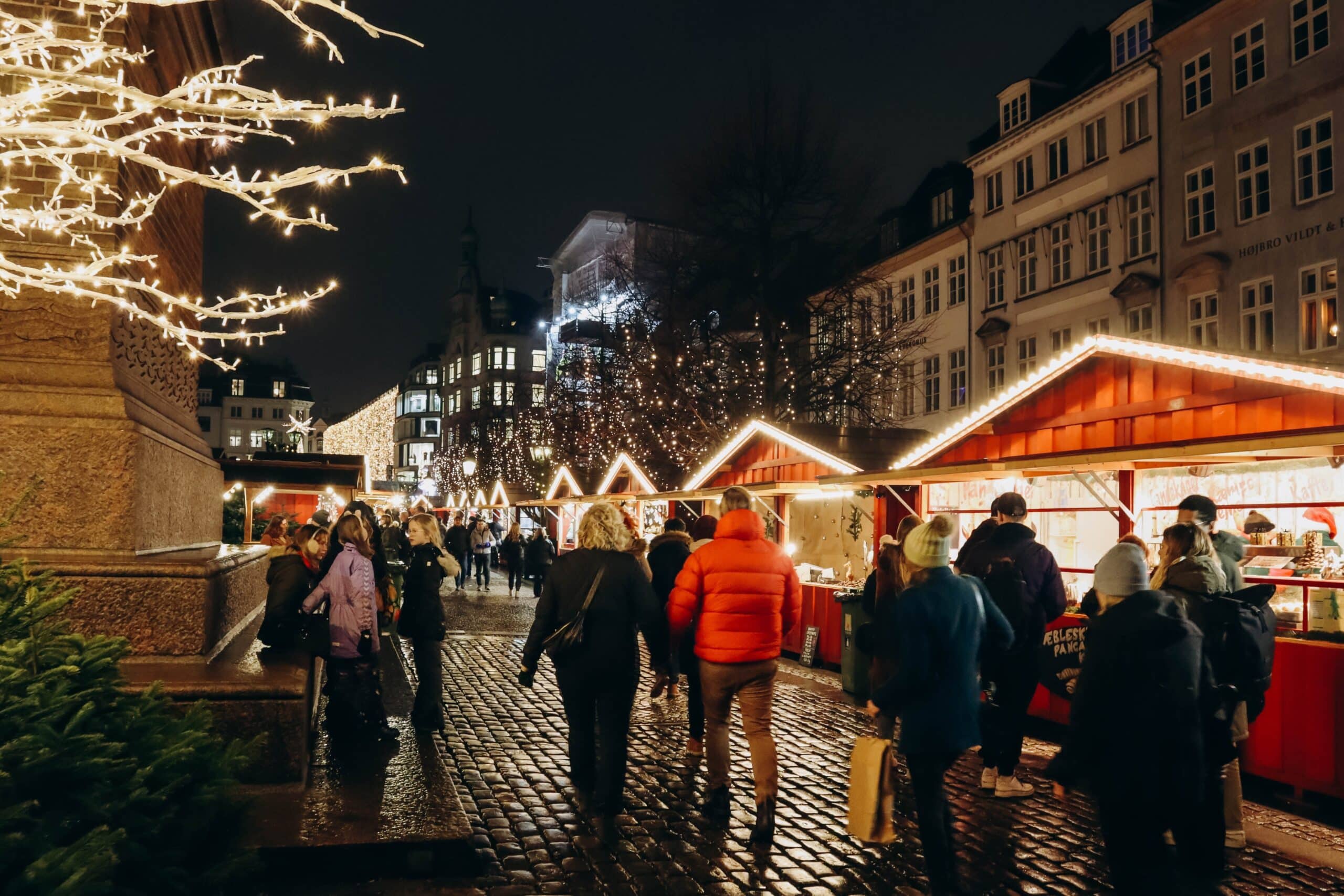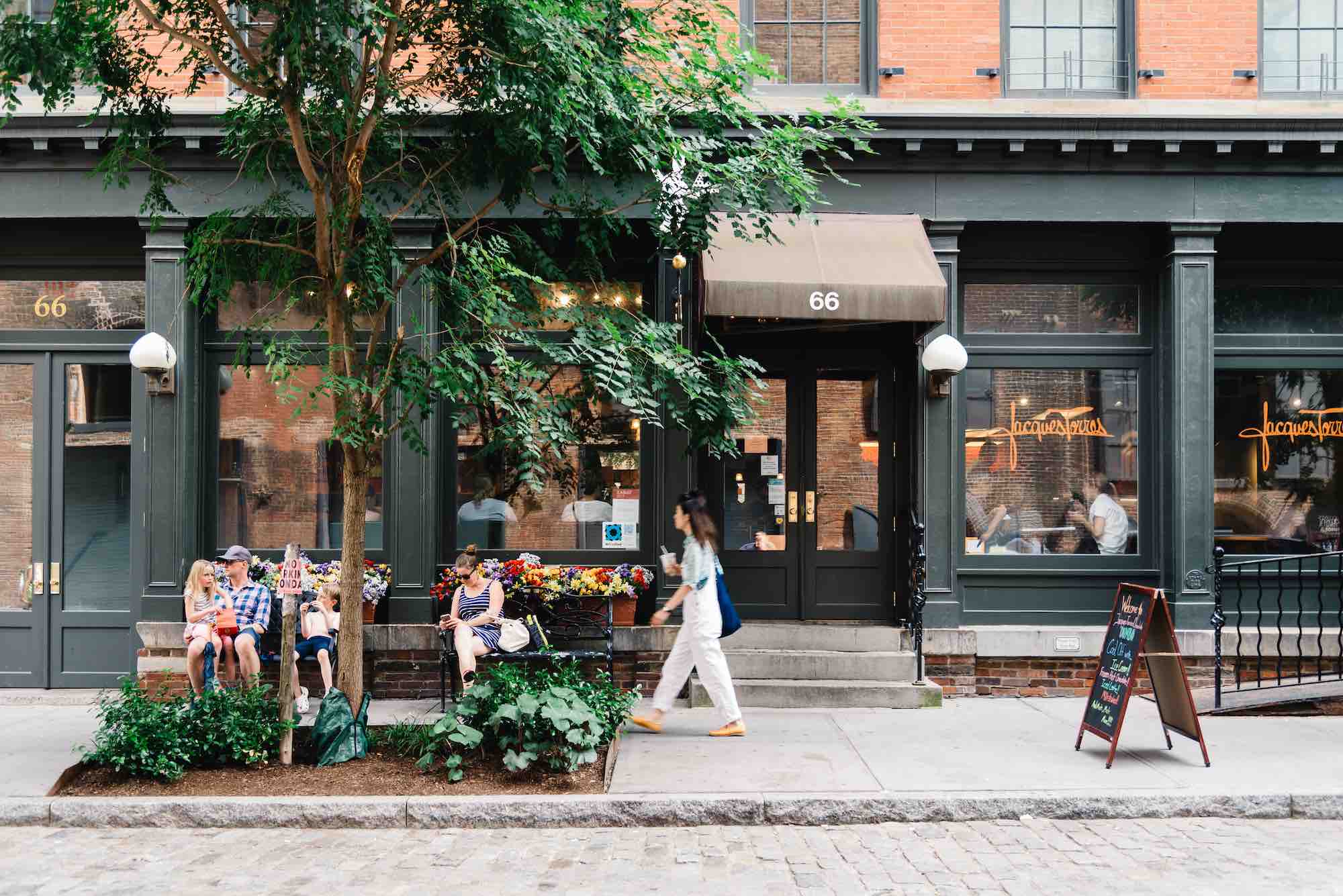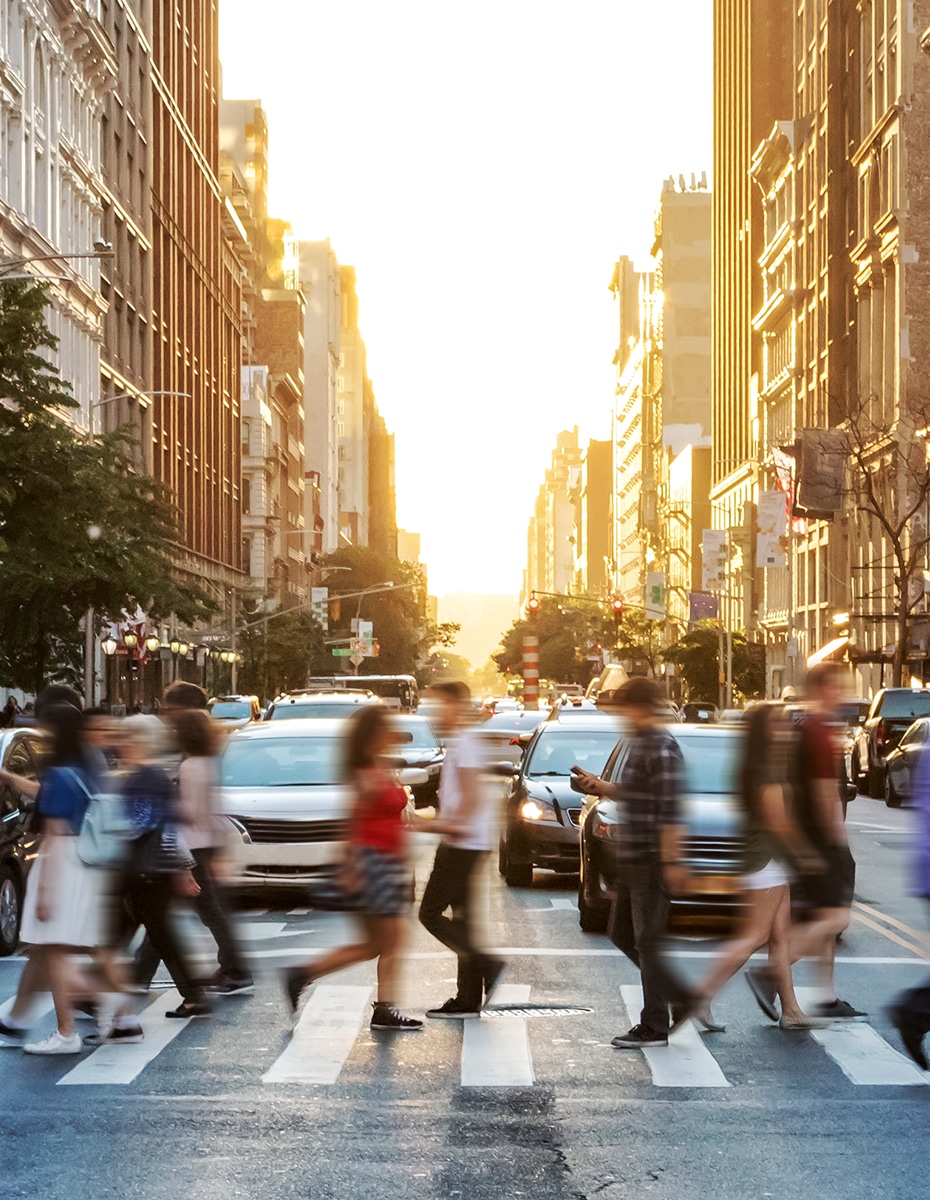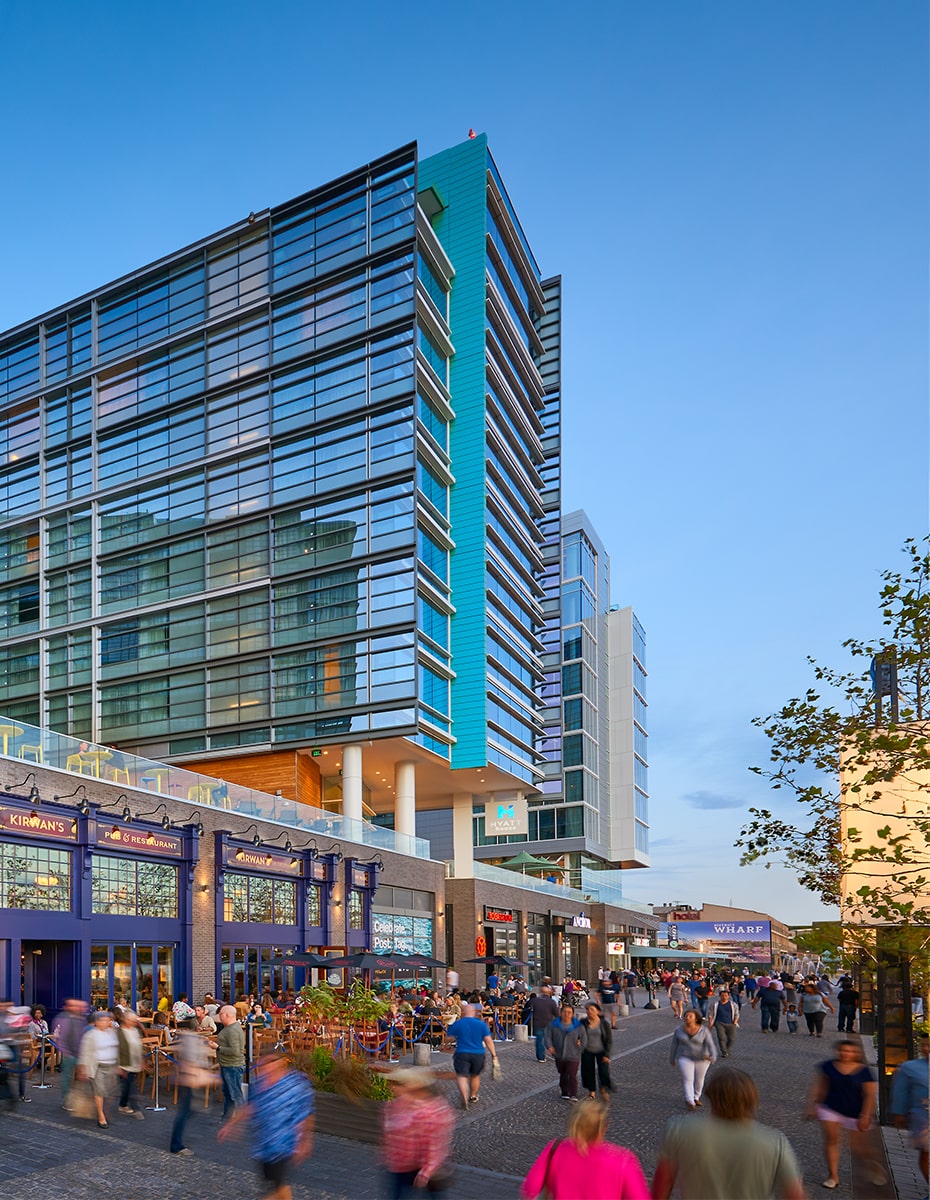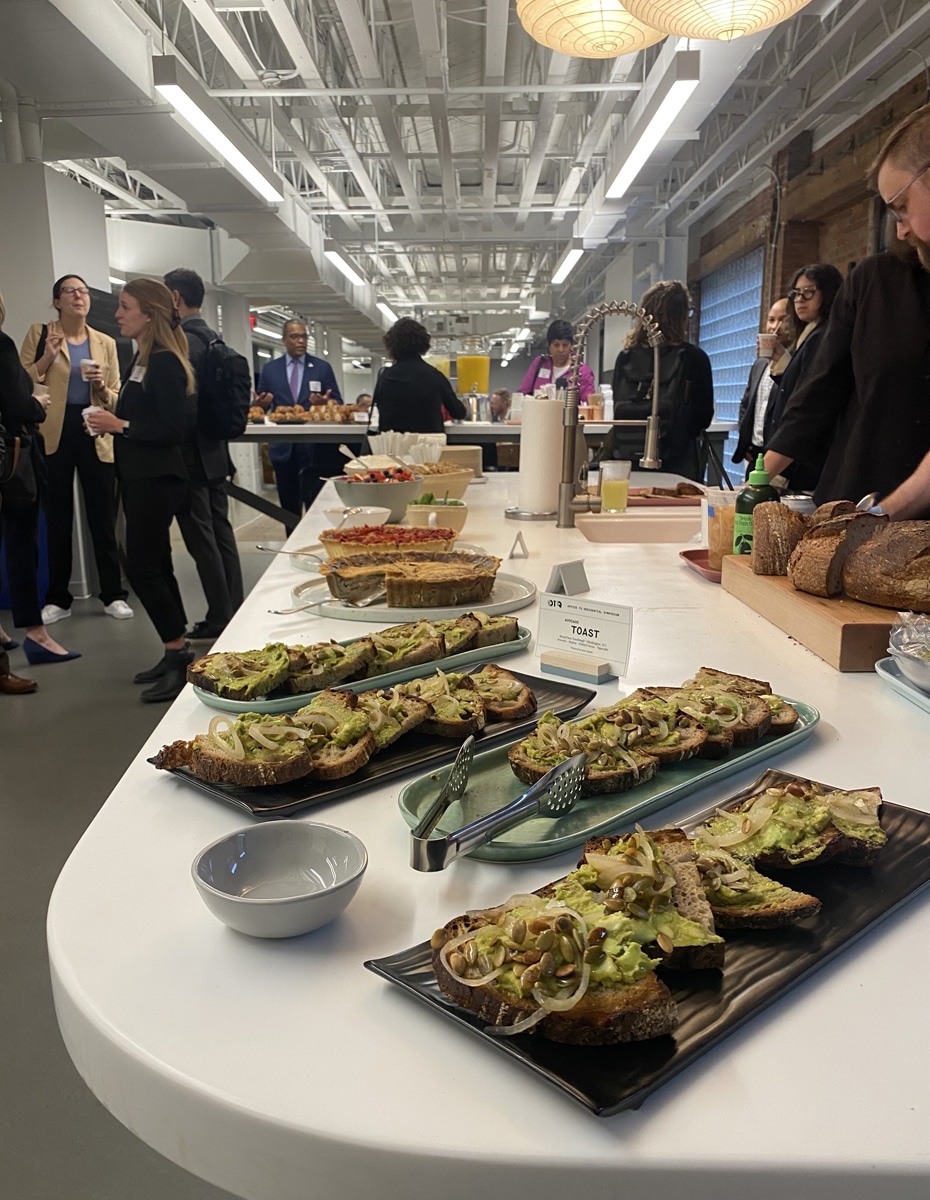As winter looms, the Place Consulting team at Streetsense is thinking about the challenges of winter placemaking. Let’s face it—for most places, activating public space in the winter months is hard; shorter days and colder temperatures mean that you can’t rely on nice weather and well-designed public space to bring people out of their houses and gather. And yet, the evidence bears out time and time again that placemaking and activation is essential for both individual and community wellbeing and can play a vital role in sustaining local economies as well – and it becomes no less important as the weather cools down.
Lower temperatures and decreased daylight of winter can contribute to seasonal depression and reduced physical activity and heighten feelings of isolation – further heightening the “epidemic of loneliness” that is growing in society. Public spaces in every season provide much needed opportunities for physical activity, social connection, and community care through programs and activations can help combat the negative effects of winter on individuals and communities.
Winter placemaking also plays an essential role in driving off-season economic activity. Increased foot traffic due to thoughtful activations can provide a boost to local businesses and help to generate a sustained “buzz” that attracts more visitors to an area. A well-curated placemaking strategy and sufficient hype can even drive tourism in the winter months. The dynamic mix of economic vibrancy and social connection is what combines to create long-term value for a place.
Elements of Winter Placemaking
When it comes to winter placemaking, programming is king. Even for places that are naturally active and vibrant in warmer months, winter programming requires special attention and care in order to succeed.
Programming
Winter festivals lasting days or even weeks require extensive planning, robust infrastructure, and ongoing management, but the payoff can be well worth the effort when executed successfully. Great festivals not only generate economic activity but also create meaningful cultural experiences and can drive activity to otherwise underutilized spaces. Portland, Oregon’s Winter Light Festival, held annually for one week in February under an I-5 overpass, brought an estimated 274,000 visitors in 2024, with an estimated economic impact of over $10 million. Common types of winter festivals include:
• Winter light installations
• Snow/Ice sculpture exhibitions
• Solstice celebrations
• Holiday markets
Events that use a Lighter-Quicker-Cheaper (LQC) framework still require planning but don’t rely on extensive infrastructure, complex permitting, or ongoing active management. In Pittsburgh, PA, the South Side Soup Contest brings neighbors and visitors alike out on a February Saturday to visit local businesses and taste a variety of soup offerings. Over its nearly two decades running, it’s become an eagerly anticipated local event. Other examples of LQC events include:
• Pop-up fire pits & smores
• Holiday House Tours
• Scavenger hunts
• Food tours
• One-day events, like an ice fishing tournament or snow sculpture contest
Ongoing programs may require some simple administration such as a website but otherwise use a crowd-sourced approach to execution.
• Shoveling projects can be coordinated with community priorities to clear strategic connections
• Participatory wayfinding using downloadable signs to let citizens point the way to their favorite community spots
• Storefront window decorating contests
Infrastructure
Winter extremes highlight the importance of infrastructure as an essential component of placemaking. Disconnected or dysfunctional moments can be the difference between people choosing to go out or stay in when it’s dark and cold.
We always highlight access & accessibility as key components of any placemaking strategy. Ease of access for a variety of users arriving in a variety of ways is an essential part of what makes places “sticky.” Maintaining this access in winter weather presents additional challenges; think strategically about where people are coming from and how they will arrive and focus on maintaining those access paths, from clear roads for safe vehicular travel down to sidewalks free of ice. In snowier climates, think outside the box about other ways of access, such as snowmobile or ski tracks (which can also be leveraged to support activation and programming).
Light. As with most infrastructure, the absence of light is more noticeable than its presence. Lack of lighting or poor-quality lighting can elicit feelings of unease and discomfort, whereas properly lit places make us feel comfortable, safe, and welcomed.
In Baltimore, MD, the Neighborhood Design Center coordinated a pilot project in response to stakeholders in the Station North neighborhood, who had identified inferior lighting or lack of lighting as a challenge to cultural activity, street life, and investment. Signal Station North (2019-2021) took a deep dive into light as essential infrastructure, examining existing conditions and ultimately providing a variety of resources to improve those conditions.
A key takeaway from their public engagement was how the presence or absence of lighting informs the paths that people choose to take or avoid. In one exercise, participants mapped paths that they would like to take but avoided due to lack of lighting. Just as with traditional ways of thinking about access and accessibility, this is critical information for making it easy for people to get to you, particularly in winter when daylight is already ending as people are leaving work.
Warmth. If you want people to spend any prolonged time outside opportunities to get warm need to be factored in to your placemaking strategy. In retail districts, the concentration of stores and restaurants may be enough. In cultural or civic districts, indoor spaces may need to be supplemented by additional infrastructure like warming huts, fire pits, or heated dining pavilions. It is important to note that the additional lighting and heating demand for winter activations may require supplementing existing power sources.
How Can We Help?
At Streetsense, we approach placemaking as a multi-faceted tool for generating long-term value and building lasting places. Our strategy process includes design, economic development, retail strategy, brand identity, programming and activation, and can be calibrated to suit the unique demands of a particular place or situation.
BACK TO LATEST

